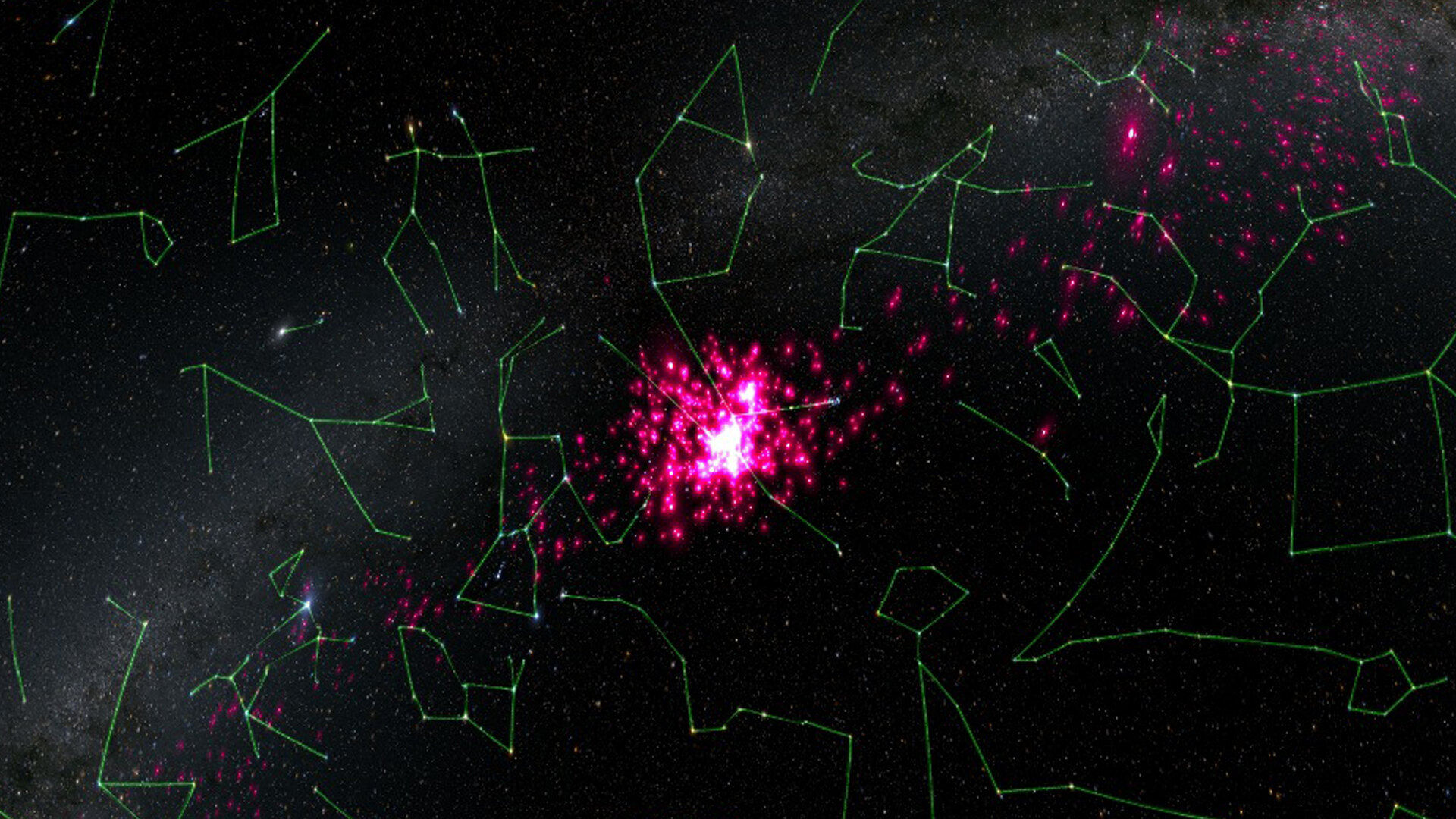A 'lump' of dark matter may be ripping apart Taurus' face
Stars are 'dissolving' in the bull's head, researchers say.

The Hyades — a young, V-shaped cluster of stars swooshing through the head of the constellation Taurus — is slowly being ripped apart by an enormous, invisible mass, a new study suggests. This unrest in the bull's head could point to an ancient cache of dark matter left over from the Milky Way's creation, the study authors said.
In the new paper, published March 24 in the journal Astronomy and Astrophysics, researchers used data from the European Space Agency's (ESA) Gaia star-mapping satellite to investigate the history of the Hyades. Located about 150 light-years from Earth, this family of several hundred stars is the closest star cluster to our solar system, and it's clearly visible in the night sky. (One of its brighter stars, Epsilon Tauri, is also called the "Bull's eye" for its prominent position on the face of Taurus.)
Astronomers estimate that the cluster is between 600 million and 700 million years old (a cosmic infant compared with our sun's 4.6 billion years), and has already changed shape significantly in that time, thanks to the gravitational influence of other nearby clusters and objects. The authors of the new study wanted to learn more about those changes by studying the cluster's "tails" — two stretched-out clumps of stars separated from the bulk of the cluster's body, one aiming toward the Milky Way's center and the other trailing away from it.
Related: Spaced out! 101 astronomy images that will blow your mind
Tidal tails, as astronomers call them, form naturally as the result of gravitational interactions between groups of stars. To see the tails at their clearest and most spectacular, scientists look to merging galaxies — like the swirly Antennae Galaxies — which gradually pull each other's edges into wispy strings of starlight.
But recently, scientists observed tidal tails in stellar clusters, too. As stars within the clusters grow older and more massive, they jostle their neighbors, eventually pushing some stars toward the edge of the cluster. There, stars become more susceptible to the pull of even more massive objects within the galaxy, gradually leaving the cluster's orbit and forming a tidal tail. The speed and trajectory of these tails can even point to the presence of objects that are invisible to telescopes, study lead author Tereza Jerabkova, an ESA research fellow, told Live Science.
"Stars [in tidal tails] may be seen to move faster in some direction, and this might indicate something is there which is attracting them," Jerabkova said.
Get the world’s most fascinating discoveries delivered straight to your inbox.
A cluster's leading and trailing tails tend to contain the same approximate number of stars, but when Jerabkova and her colleagues mapped the Hyades cluster's tails, they saw something surprising: The trailing tail had remarkably fewer stars in it than the leading tail. It looked as if the trailing tail was "dissolving" into space, the researchers wrote.
With computer simulations, the researchers tried to uncover what could be causing this mismatch. They concluded that the cluster and its tail were being "disrupted by a massive lump" of matter with a mass of 10 million suns, Jerabkova said, similar to how a large galaxy can disrupt a small one with its gravitational force. But even more puzzling, there was no "lump" — or any object at all — visible in the vicinity of the Hyades that could account for such a disturbance.
One possible explanation, the researchers said, is dark matter — the invisible, heavy stuff that makes up an estimated 27% of the universe's total mass, according to NASA. Scientists suspect that "halos" of dark matter helped to shape galaxies like the Milky Way, and that vestiges (or "sub-halos") of dark matter still exist scattered throughout the galaxy. It's possible that the "lump" warping the Hyades cluster is in fact a dark matter sub-halo, invisibly bending the stars to its whims, the researchers said.
According to Jerabkova, that's the best explanation for the Hyades' wonky tails, given the current available data and understanding of physics. That's an "important discovery," she added, as it proves that data from Gaia and similar star-mapping missions can reveal not just the secrets of the stars and planets surrounding us — but the invisible structures that underlie our universe, as well.
Originally published on Live Science.

Brandon is the space / physics editor at Live Science. With more than 20 years of editorial experience, his writing has appeared in The Washington Post, Reader's Digest, CBS.com, the Richard Dawkins Foundation website and other outlets. He holds a bachelor's degree in creative writing from the University of Arizona, with minors in journalism and media arts. His interests include black holes, asteroids and comets, and the search for extraterrestrial life.


